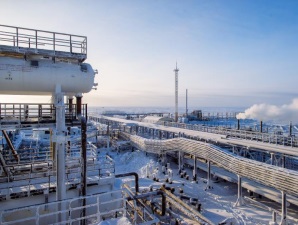The project is being undertaken at the Novoportovksoye oil and gas condensate field, development of which is being managed by Gazpromneft Yamal, a subsidiary of Gazprom Neft.
A multilateral well allows to increase the catchment area of a reservoir; one of the well boreholes is, accordingly, located on the periphery of a deposit in order to bring into development reserves some distance from the vertical borehole of the well. Economic viability is thus improved, through more intense production of hydrocarbons, as well as through lower infrastructure development costs. The Novoportovskoye well runs to a total length of 4,600 metres, with the horizontal sections set at a depth below 2,000 metres. The company plans to use one of the horizontal sections for multistage fracking of the reservoir. Round-the-clock drilling of the Novoportovskoye well was supported by specialists from the Gazprom Neft Scientific and Research Centre.
Vadim Yakovlev, First Deputy CEO, Gazprom Neft, commented: “This marks the first ever bilateral well to be drilled under Arctic conditions. The experienced gained will allow us to start building wells of more complex construction at the Novoportovskoye field, including increasing the length of horizontal sections to 2,000 metres. Greater well production capacity will, in turn, increase the economic viability of developing this field.”
The Novoportovskoye field is one of the most significant oil and gas condensate fields currently under development in the Yamal Peninsula. It is located within the Arctic Circle, some distance from pipeline transportation infrastructure. Recoverable C1 and C2 reserves are estimated at more than 250 million tonnes of crude and condensate, as well as more than 320 billion cubic metres of gas. A pilot field development programme was completed at the Novoportovskoye field in 2014, with production drilling commencing thereafter.
Shipments by sea from Cape Kammeny have been identified as the optimum solution for the transportation of crude.The first opportunity for despatching oil by sea during the winter season was confirmed by Gazprom Neft as early as 2011, following a pilot voyage by an icebreaker from the port of Sabetta (in the north—east of the Yamal peninsula) to Cape Kammeny. The characteristics of this new Yamal oil place it in the “light” category, with low sulphur content: at around 0.1 percent, this exceeds the quality not just of Urals blend, but also Brent crude. Total production volumes at the Novoportovskoye field since the start of development in 2012 now stand at more than 500,000 tonnes of oil.
26 Декабря 2025 | пятница | 00:06


